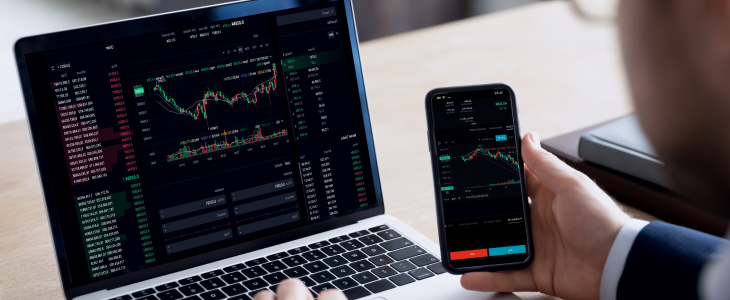
Opening an online forex trading account is a significant step for anyone interested in navigating the dynamic world of currency trading. In this guide, we will cover essential aspects of the account opening process, the necessary documentation, and tips for selecting suitable trading platforms. Additionally, we will explore the importance of utilizing open online account for forex trading Top Mobile Trading Apps for enhancing your trading experience.
What is Forex Trading?
Forex trading, or foreign exchange trading, involves the buying and selling of currencies in the foreign exchange market. It is the largest financial market globally, with a daily trading volume exceeding $6 trillion. Forex trading is facilitated primarily through online platforms, allowing traders to speculate on currency price movements.
Why Open a Forex Trading Account?
Opening a forex trading account provides access to a wide range of financial instruments and markets, allowing traders to leverage opportunities for profit. Furthermore, a forex trading account allows individuals to:
- Trade in real-time using advanced trading tools and analytics.
- Leverage their investments by borrowing funds from their broker to increase potential returns.
- Access educational resources and expert insights to enhance trading skills.

Steps to Open an Online Forex Trading Account
The process of opening a forex trading account can vary slightly depending on the broker. However, the general steps are as follows:
1. Choose a Reputable Broker
Before anything else, it’s crucial to select a reliable forex broker. Look for a broker that is regulated by a reputable financial authority, such as the Financial Conduct Authority (FCA) in the UK or the Commodity Futures Trading Commission (CFTC) in the US. Other factors to consider include:
- Trading fees and commissions.
- Available trading platforms.
- Customer support services.
- Range of tradable instruments.
2. Fill Out the Application Form

Once you have selected a broker, visit their website and fill out the online application form. This form will typically ask for personal details such as your name, address, email, and phone number. Ensure that you provide accurate information, as brokers may conduct verification checks.
3. Provide Necessary Documentation
To comply with regulatory requirements, brokers will require verification of your identity. This may involve uploading copies of:
- A government-issued identification (passport or driver’s license).
- Proof of address (utility bill or bank statement).
Ensure that all documents are clear and legible to expedite the verification process.
4. Fund Your Account
After the verification process is complete, you can fund your trading account. Most brokers offer various funding options, including credit/debit cards, bank transfers, and e-wallets. Choose a method that is convenient for you and ensure you understand any fees associated with the funding method.
5. Choose an Account Type
Many brokers offer multiple account types tailored to different trading needs. Common types of accounts include:
- Standard Accounts – Suitable for new traders.
- ECN Accounts – Allow direct market accessing with lower spreads.
- Managed Accounts – For traders who prefer a hands-off approach.
Select an account type that aligns with your trading strategy and experience level.
6. Download Trading Platform
To start trading, you’ll need to download the broker’s trading platform. Most brokers offer user-friendly platforms that come equipped with powerful tools for market analysis, order execution, and risk management. If you prefer trading on-the-go, consider using mobile trading apps that many brokers provide.
Understanding Margin and Leverage
Margin and leverage are critical concepts in forex trading. Margin is the minimum amount required to open a position, while leverage allows traders to control a larger position size with a smaller capital investment. However, it’s essential to understand the associated risks, as high leverage can amplify losses as much as it can amplify gains.
Risk Management Strategies
Implementing effective risk management strategies is crucial for long-term success in forex trading. Some common strategies include:
- Setting stop-loss orders to limit potential losses.
- Determining position sizes based on account size and risk tolerance.
- Diversifying trading instruments to spread risk.
Conclusion
Opening an online forex trading account is a straightforward process that opens the door to numerous trading opportunities. By selecting a reputable broker, providing the necessary documentation, and understanding the trading environment, you can position yourself for potential success in forex trading. Moreover, leveraging the right tools and mobile applications can significantly enhance your trading experience, allowing for quick access to the markets and informed decision-making. Happy trading!

0 comentarios